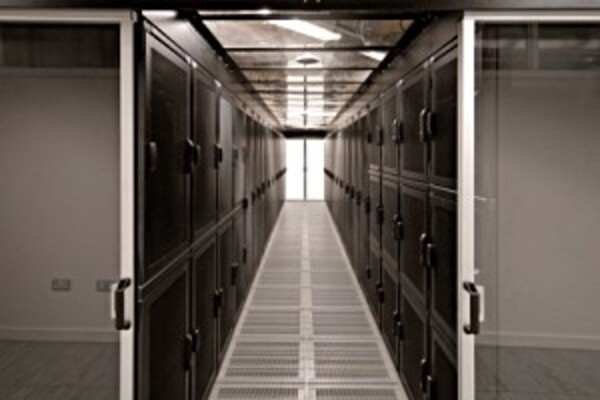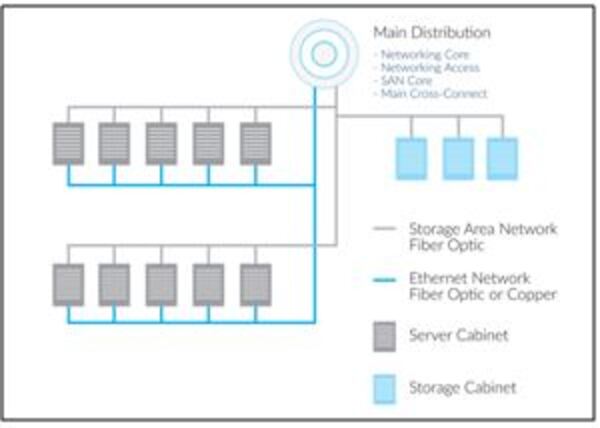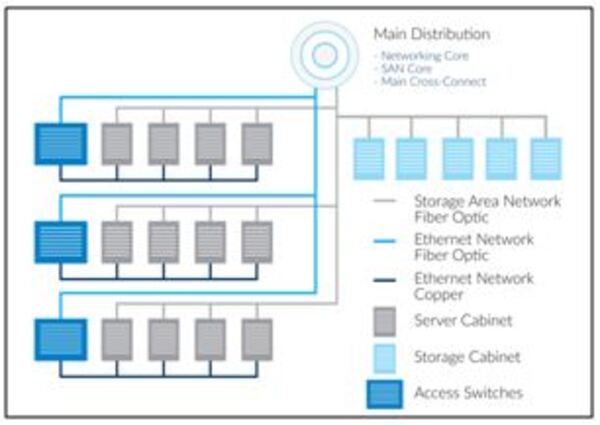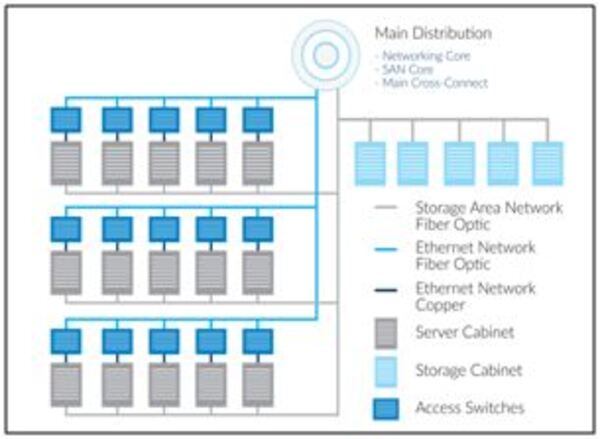
A data center’s layout is just as important as the type of fiber cable or intelligent software inside it. The whole infrastructure and server connectivity hinges on the design. Three factors should be considered when putting everything together:
- The size of the data center
- Anticipated growth
- Whether it’s new installation or an upgrade to a legacy system
There are three main designs to choose from, yet there’s no one-size-fits-all. Each design has its pros and cons.

Most appropriate for smaller data centers, a centralized design has separate LAN/SAN environments with home run cabling to each of the server cabinets and zones.
PROS
- Efficient use of switch port
- Easier to manage and add components
CONS
- Difficult to support expansion
- Extended cable length can cause congestion in pathways, increasing cost (particularly for larger data centers)

In this design, switches can be distributed in an end-of-row (EoR) or middle-of-row (MoR) location.
PROS
- Recommended by the ANSI/TIA-942 Data Center Standards
- Scalable, repeatable, predictable
- Cost-effective
CONS
- The need to run cable back to an EoR/MoR switch

This design consists of two or more switches in each server cabinet, placed at the top of the rack.
PROS
- Good for dense, one-rack unit server environments
- Simplifies cable management
- Fast port-to-port switching for servers within the rack
CONS
- Increase in cost of switches and licenses
- Underutilized switch ports
- Difficult to manage in large deployments
- Potential for overheating
Even with these three architectures, there are still decisions to be made as to methods used for connecting all of the electronics in the main and horizontal distribution area: cross connect or interconnect. You can find out which technique CommScope recommends by downloading our eBook, The Connected and Efficient Data Center. Learn tips and gain insight to help demystify the technology and untangle the complexities.







